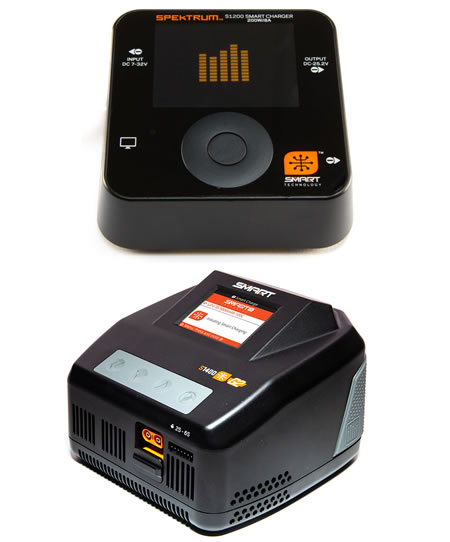AMP 1/144 Boeing 747 Airborne Telescope SOFIA # 144014
The Boeing 747 Airborne Telescope, known as SOFIA (Stratospheric Observatory for Infrared Astronomy), was a unique airborne observatory operated by NASA in collaboration with the German Aerospace Center (DLR). Based on a heavily modified Boeing 747SP, SOFIA was equipped with a powerful, high-altitude telescope that allowed it to study celestial objects and phenomena in infrared wavelengths, which are largely inaccessible to ground-based observatories due to the Earth's atmosphere.
SOFIA made groundbreaking contributions to astronomy, particularly in the study of star formation, planetary atmospheres, and the composition of distant galaxies.
Key Features:
Aircraft Platform (Boeing 747SP): SOFIA was built on a modified Boeing 747SP, a shortened version of the iconic Boeing 747 airliner. The 747SP variant was chosen for its ability to fly at higher altitudes (up to 45,000 feet), which is crucial for infrared observations. At these altitudes, SOFIA could operate above the majority of the Earth’s water vapor, allowing it to capture clearer images of the infrared universe.
Telescope Specifications: The core of SOFIA’s observational capabilities was its 2.7-meter (8.9-foot) diameter infrared reflecting telescope. The telescope was mounted in an open cavity at the rear of the aircraft, specially designed with a sliding door that could be opened mid-flight to expose the telescope to the sky while minimizing airflow turbulence around the open cavity. This design allowed the telescope to remain stable during observations.
Wavelength Range: SOFIA's telescope operated in the infrared spectrum, with a wavelength range from 0.3 to 1600 microns. Infrared observations are essential for studying objects that are obscured by dust or that emit primarily in non-visible wavelengths, such as star-forming regions, distant galaxies, and even planetary atmospheres.
Instruments: SOFIA was equipped with a variety of specialized instruments that could be swapped out depending on the mission. These instruments included spectrometers, cameras, and photometers designed to capture data in various infrared wavelengths.
Flight Capabilities: SOFIA could fly at altitudes of up to 45,000 feet (13.7 km), which placed it above 99% of the Earth's atmospheric water vapor. This allowed it to make observations that are impossible from ground-based telescopes. A typical mission lasted 8-10 hours, with a range of around 11,500 km (7,145 miles).
Scientific Mission and Contributions:
SOFIA was designed to address some of the most fundamental questions in astrophysics by observing the universe in the infrared spectrum. Its unique airborne platform allowed astronomers to collect data on a wide range of celestial phenomena.
Star and Planet Formation: One of SOFIA's primary missions was to study the birthplaces of stars and planetary systems. Infrared light can penetrate through thick clouds of gas and dust that obscure visible light, making SOFIA ideal for observing regions of active star formation, such as stellar nurseries.
Galaxies and Black Holes: SOFIA also studied the central regions of galaxies, where supermassive black holes reside. Infrared observations allowed scientists to peer through the dense material surrounding these black holes and gain insights into their growth and influence on their host galaxies.
Planetary Atmospheres: SOFIA provided critical data on the atmospheres of planets and moons in our solar system. It was particularly useful in studying the outer planets (like Jupiter and Saturn) and their moons, as well as the atmospheres of exoplanets in distant star systems.
Water on the Moon: One of SOFIA's most famous discoveries was detecting water on the sunlit surface of the Moon in 2020. The infrared instruments aboard SOFIA were able to confirm the presence of water molecules in Clavius Crater, a finding that has significant implications for future lunar exploration and the potential for in-situ resource utilization on the Moon.
Nebulae and Star Clusters: SOFIA observed various nebulae, including planetary nebulae and supernova remnants, helping astronomers understand the lifecycle of stars and the material they expel into space.
Operational History:
SOFIA’s maiden flight took place in 2007, with full scientific operations commencing in 2010.
It operated out of NASA’s Armstrong Flight Research Center in Palmdale, California, and conducted regular flights over the Pacific Ocean, where the atmosphere is especially dry, and in other parts of the world, depending on the observational requirements.
The airborne observatory flew numerous missions, each lasting around 8-10 hours, allowing it to travel to optimal locations for observations.
Over the course of its operational lifetime, SOFIA made significant contributions to a wide range of astronomical disciplines, from stellar physics to planetary science.
Challenges and Decommissioning:
While SOFIA made important contributions to astronomy, it faced operational challenges.
The cost of maintaining and operating the observatory was high, and it required extensive coordination between flight operations and scientific teams.
Despite these challenges, SOFIA remained a valuable tool for infrared astronomy for over a decade.
In 2022, NASA announced the decision to retire SOFIA, citing its high operating costs and the completion of its primary scientific objectives.
The final flight of SOFIA took place on September 29, 2022, marking the end of an era in airborne astronomy.
Legacy and Impact:
SOFIA’s legacy lies in its ability to conduct cutting-edge science from a unique platform.
By observing in the infrared spectrum from high altitudes, it provided data that ground-based telescopes simply could not.
The discoveries made by SOFIA, particularly its detection of water on the Moon, will continue to shape our understanding of the universe for years to come.
Moreover, SOFIA helped train the next generation of astronomers and engineers, offering hands-on experience with airborne observatories and infrared instrumentation.
Its impact on the scientific community and the knowledge it contributed to humanity’s understanding of the cosmos will ensure that SOFIA is remembered as a groundbreaking project in the history of astronomy.
Conclusion:
The Boeing 747 Airborne Telescope SOFIA was a remarkable blend of aviation and astronomy, offering unique insights into the universe from its high-altitude vantage point.
By allowing scientists to study the cosmos in infrared light, SOFIA helped unlock the mysteries of star formation, galactic evolution, and planetary atmospheres, leaving an enduring legacy in the field of astrophysics.
Did you know we are the UK's largest GodHand Tools stockist and official UK distributor!
Check out their amazing Ultimate Nipper 5.0, which is the best Nipper on the market.
All Godhand tools are available for next-day delivery.





















 Spread the cost with Paypal Credit
Spread the cost with Paypal Credit
 Spread the cost with Klarna
Spread the cost with Klarna










